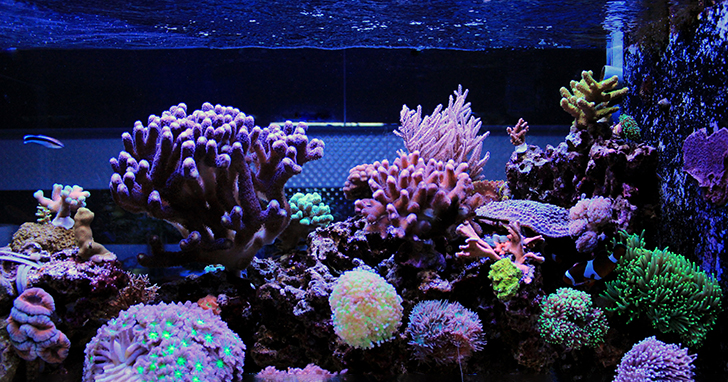
Do’s and Don’ts of LEDs in Aquarium LightingAre LED’s the best kind of lighting for aquariums?
LED lighting has many advantages over other types of lighting for aquarium use. From dramatic energy savings, providing amazing color and shimmer effects, to long lamp life - LED lighting is a very viable alternative to status quo aquarium lights. To get the most out of your LED lights, we've put together this simple list of do's and don'ts for using LEDs: DO's:
Is it good to have multicolored LED lighting in an aquarium? LEDs are now available in a multitude of color spectrums and combinations, so don't get stuck on one or two colors. These handy color guides can help you choose which color spectrum will most enhance the colors in your tank: Freshwater or Saltwater. And if you really want to explore different colors, add an RGB Panorama Pro Module for almost limitless color combinations! Experiment with dimming LEDs in your aquarium Dimmers are great for adjusting brightness and can also be used for blending colors. If you are using multiple LED color spectrums, try dimming one color and increasing brightness of the other! In addition, dimming your LEDs will also extend the lamp life and save on energy! How do you ventilate your LEDs and heat sinks? LEDs don't transfer heat into the aquarium, but they do generate a fair amount of heat upward and excessive heat can dramatically degrade the lifespan of an LED chip. That's why it's very important to keep them cool. Make sure you provide adequate air circulation around the LED light strip and allow heat to freely dissipate vertically and around the heat sink. If you're installing them in a canopy or all-in-one hood, use a cooling fan to ensure you're getting good air flow around the LED Do corals grow better under LED lighting? Yes, LEDs do grow coral - just ask our experts at LiveAquaria.com! They have been using LED lighting for quite some time now over our coral tanks with amazing results. Do LEDs bring out coloration in fish? The specific spectrums provided by LED lighting can bring out colors in certain fish like you've never seen before. Check out these handy color guides to figure out which color is best for your fish: Freshwater or Saltwater. Can using LEDs in aquariums save money? We all like more pennies in our pocket and a stunning aquarium with amazing color and shimmer is only part of the equation with enjoying LEDs. They are so energy efficient, it's sometimes unbelievable how much you're saving daily in electricity. To make it easy, a surge protector with a built-in electric monitor will show you how much you're saving! Can LED lighting make corals look better? If you've been looking for the magic light to really bring out the colors in your coral, select units with light output in the actinic royal blue range. This will really make the colors in your coral stand out! And if you have soft polyp corals and zoanthids, mix a little magenta to pump up the purples, greens and orange colors! Create amazing shimmer LED lights definitely provide an intense point-source light and create amazing shimmer and glimmer effects in your aquarium. Remember, white LEDs produce the most shimmer and you'll need to have some strong surface rippling to really make your tank shimmer. Dont's:
Should you submerge LEDs? Even though an LED may be water resistant or waterproof, it doesn't mean it's designed to be submerged and used underwater. Exposing your LEDs to water for any length of time will damage the LED circuit board and likely cause your heat sink and hardware to corrode. Can salt or mineral deposits harm LEDs in aquariums? Salt and minerals deposits cause corrosion and really damage the heat sink and LEDs. It's important to keep your lights clean of any type of salt creep or mineral deposits to avoid premature failure. Can keeping LEDs close to metal halides, compact fluorescents or T5HO lamps harm them? Remember, heat is the enemy of LED lights and mounting them too close to other forms of lighting (especially metal halides) can dramatically decrease their lifespan Can LEDs harm your corals? LED lights can be very intense and sudden changes in light brightness can cause some corals to expel their zooxanthellae and "burn" or "bleach white." It's vitally important to slowly acclimate your corals to new LED lights and our Coral Acclimation Guide will walk you through the steps. We realize this list may not apply to every aquarium application, however understanding LED lighting and following some simple guidelines will ensure you get the most out of your LED lighting system. Related Articles
|
|
|


